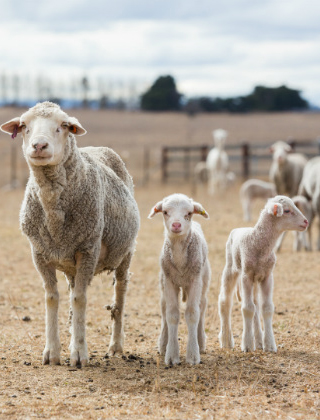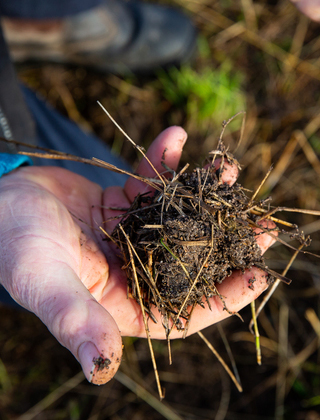Water
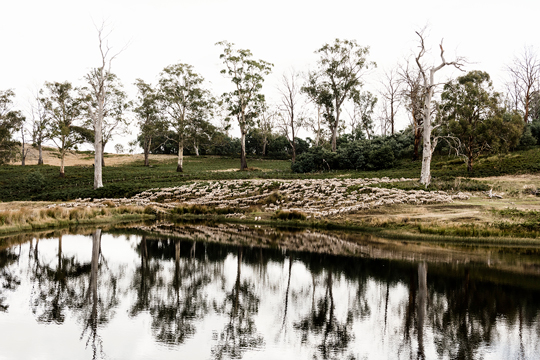
Healthy water systems are crucial to the Australian environment, sustaining many different plant and animal communities, agricultural enterprises and rural communities.
Water is a precious resource in agricultural production systems. Healthy water systems are crucial to the Australian environment, sustaining many different plant and animal communities, agricultural enterprises and rural communities.
The Australian wool industry is committed to continuous improvement in water management. AWI has invested in research to develop and extend better and more effective ways to manage water resources on woolgrowing farms.
Management practises that effectively protect and regenerate waterways and riparian areas include:
- Fencing off the waterway to take control of erosion, grazing pressure and to allow native species to regenerate.
- Planting native species to revegetate the area to encourage soil stability and health, shelter and water quality.
The benefits of restoring the health of waterways are numerous and include reduced erosion, increased water quality, ground cover, improved creek bank stability, weed management, increased biodiversity, effective shelter for livestock and reduced salinity.
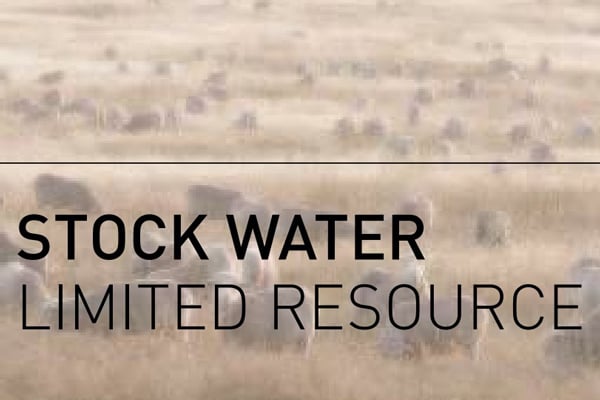
Stock Water
Knowing where water is on your property and how much you have available is vital in times of drought. The best way to manage and maintain stock water is to have reliable information about your property’s water supplies. This means knowing where the water is, how much is available and whether it is ‘fit for purpose’. A water stocktake will provide this vital information.
Water Management tools
To support woolgrowers identify and put in place management practises to restore water ways and supply their sheep with quality water, AWI has developed extensive resources, guides and tools.
Are your waterways in good condition?

When you walk along your stream or creek bank it is often hard to know what to look at to assess whether your waterway is healthy.
This quick and easy checklist will help you to work out the health of the streams or creeks running through your property by looking at six features we know affect whether a stream is healthy.
Download the guide:
Managing rivers, creeks and streams
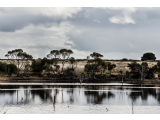
At least three-quarters of all woolgrowing properties have frontage to a waterway. Sheep need access to high quality water to thrive, and riparian pastures are often highly productive with good quality feed.
These guides provides practical tips to assist woolgrowers in managing their waterways. Much of the information described here has been developed and used by woolgrowers, and can be applied to increase production and profit, while maintaining the farm’s natural resource base and improving its capital value.
Download the below guides for further information:
Managing rivers, creeks and streams - a woolgrowers guide
Wool industry river management guide: high rainfall zones including tableland areas
Wool industry river management guide: sheep/wheat zones
Rapid appraisal of riparian condition (South Australia)
Managing creeks and waterways in the mid north of South Australia: a woolgrowers guide
Rapid appraisal of riparian condition (Tasmania)
Managing rivers and streams in Tasmania: a woolgrowers guide
Tasmanian wool, natural landscapes, natural fibres
Rapid appraisal of riparian condition (NSW)
Managing creeks and waterways in the Southern Tablelands of NSW: a woolgrowers guide
Managing in-stream wetlands on wool producing farms
Improving water quality to benefit production
Managing weeds in riparian areas
Woolgrower Case Studies

The 10 woolgrowers featured in this Insights publication value the creeks, streams or rivers on their farm, and manage them as different, yet integrated parts of their wool enterprise. They recognise that riparian areas (the land alongside rivers, creeks and streams) and waterways have multiple uses and values.
Download the case studies:
Insights: case studies on how farmers are successfully managing rivers, streams and creeks on wool properties
Reflections of Tasmanian woolgrowers
Preventing Erosion

Erosion of creek beds and banks is a natural process. However erosion rates are significantly increased by human activities such as clearing land for agricultural production, and uncontrolled grazing by stock.
The key principle in preventing or reducing erosion along creeks is to maintain good ground cover over the surface of the banks.
To help woolgrowers identify and repair erosion these resources have been developed.
Download:
Preventing creek erosion
Preventing erosion to maximise wool production
Managing gullies on wool-producing farms






